Configuring Your AutoCAD Software
| Learning Outcomes |
When you have completed this module, you will be able to:
|
WORK ALONG: Configuring Your AutoCAD Software
Step 1
Enter the OPTIONS command to open the Options dialogue box.
Step 2
In the Options dialogue box, enable the Profiles tab. (Figure Step 2)

| AUTHOR’S COMMENTS: Do not be concerned if your dialogue box does not match the figure exactly. |
Step 3
Click the Add to List button. This will open the Add Profile dialogue box. Enter the Profile name: Original 3D. (Figure Step 3A and 3B)


| AUTHOR’S COMMENTS: I am having you create a profile named ‘ Original 3D ‘ so that you can go back to the way your AutoCAD was configured when you started this book. You will not be using this profile during the course but at anytime, or when you complete the book, you can use this profile to restore the original configuration. |
Step 4
Using what you learned in Step 3, create a new profile named: AutoCAD 3D. (Figure Step 4)
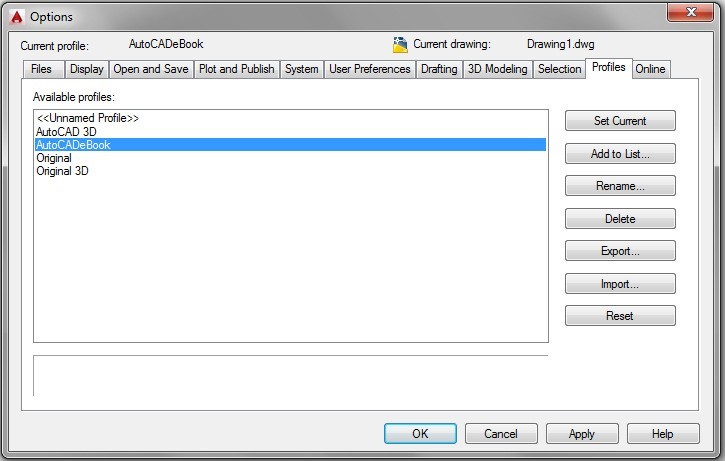
Step 5
Click the profile: AutoCAD 3D to highlight it. While it is selected, click the Set Current button. Ensure that the Current profile is: AutoCAD 3D as shown across the top of the dialogue box. (Figure Step 5)

Step 6
Enable the display of the Files tab. Click the + on Customization Files to expand it. Click the + on the Main Customization File to expand it. Click the file and location to highlight it as shown in the figure. While it is selected, click the Remove button. (Figure Step 6)

| AUTHOR’S COMMENTS: Your dialogue box may not match the figure exactly. |
Step 7
Step 6 will remove the customization file and show a blank box as shown in the figure. Click the Browse button to open the Select a file dialogue box. (Figure Step 7)

Step 8
In the Select a file dialogue box, pull down the Look in: box and find C drive. Click the folder: CAD Courses. (Figure Step 8)
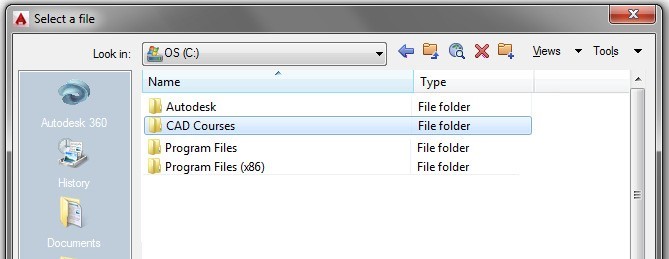
| AUTHOR’S COMMENTS: If you used a different drive when you downloaded the templates and menu from the website, you will have to find that drive letter instead of drive C. |
Step 9
Under the folder : CAD Courses, select the folder: AutoCAD 3D. Under the folder: AutoCAD 3D, select the folder: Menu. In the folder: Menu, select the file: AutoCADbook.CUIX and then click Open. (Figure Step 9)

Step 10
You should now see the file location:
C:\CAD Course\AutoCAD 3D\Menus\AutoCADbook.CUIX. (Figure Step 10A and 10B)


Step 11
Click the small arrow in the Workplace Switching icon on the Status bar located along the bottom of the Graphic window. (Figure Step 11)

Step 12
In the Workspace pull-up menu, click Workspace Settings… This will open the Workspace Settings dialogue box. (Figure Step 12)

| AUTHOR’S COMMENTS: AutoCAD has two menu systems. They are the Toolbar menus and the Ribbon menus. You must use one or the other but you cannot use both at the same time. You can however, switch back and forth between them. Along with using either the Toolbar or Ribbon menus, you must add the Pull-down menu and use it in conjunction with either menu. The AutoCAD 2D Advanced book teaches more about Toolbar, Ribbon, and Pull-down menus as well as how to create and edit them. |
If you intend to use Toolbars menus to do this book, complete the following steps and skip Step 13 (Ribbon menus) and Step 14 (Ribbon menus). If you intend to use Ribbon menus to do this book, skip to Step 13 (Ribbon menus).
Step 13 (Toolbar menus)
In the Workspace Settings dialogue box, set My Workspace to the workspace: AutoCADbook. Enable Automatically save workspace changes by clicking the radio button. Click OK to close the box. (Figure Step 13)

Step 14 (Toolbar menus)
Click the small arrow in the Workplace Switching icon again on the Status bar. Click the workspace: AutoCADbook to set it as the current workspace. Make sure that the check mark is beside the workspace: AutoCADbook as shown in the figure. (Figure Step 14)

If you intend to use Ribbon menus to do this book, complete the following steps. If you intend to use Toolbar menus to do this book, skip to Step 15.
Step 13 (Ribbon menus)
In the Workspace Settings dialogue box, set My Workspace to the workspace: 3D Modeling. Enable Automatically save workspace changes by clicking the radio button. Click OK to close the box (Figure Step 13)

Step 14 (Ribbon menus)
Click the small arrow in the Workplace Switching icon again on the Status bar. Click the workspace: 3D Modeling to set it as the current workspace. Make sure that the check mark is beside the workspace: 3D Modeling as shown in the figure. (Figure Step 14)

Step 15
Click the Hamburger icon located on the far right side of the Status bar. This will display the Customization menu. Enable or disable each item in the menu until it matches the figure. (Figure Step 15)

| AUTHOR’S COMMENTS: Enter the following commands in the Command Line window located along the bottom of the Graphic window. |
Step 16
Enter the MENUBAR command and set it to 1, as shown below. Command: MENUBAR
Enter new value for MENUBAR <0>: 1
Command:
Step 17
Enter the NAVBARDISPLAY command and set it to 0, as shown below. Command: NAVBARDISPLAY
Enter new value for NAVBARDISPLAY <1>: 0
Command:
Step 18
Enter the VPCONTROL command and set it to OFF, as shown below. Command: VPCONTROL
Enter new value for VPCONTROL <ON>: OFF
Command:
If you are using AutoCAD 2015 execute the following command:
Step 19 (2015)
Enter the NEWTABMODE command and set it to 0, as shown below. Command: NEWTABMODE
Enter new value for NEWTABMODE <1>: 0
Command:
If you are using AutoCAD 2016, 2017, or 2018 execute the following command:
Step 19 (2016, 2017, and 2018)
Enter the STARTMODE command and set it to 0, as shown below.
Command: STARTMODE
Enter new value for STARTMODE <1>: 0
Command:
Step 20
Click the item Tools located in the top line of the in the Pull-down menu. In the Pull- down menu, click Options. (Figure Step 20)

Step 21
In the Options dialogue box, enable the Files tab. Expand Template Settings and Drawing Template File Location. Highlight the current location by clicking it. Click the Remove button. (Figure Step 21)

Step 22
It will display an empty box as shown in the figure. (Figure Step 22).

Step 23
Click the Browse button. In the Browse for Folders dialogue box, locate the folder: (Figure Step 23)
CAD Courses/ AutoCAD 3D/ Templates

Step 24
Click OK and the new location will appear as shown in the figure. (Figure Step 24A and 24B)


Step 25
Enable the display of the Display tab. (Figure Step 25)

Step 26
In the Display resolution area, set the Arc and circle smoothness to 20000. (Figure Step 26)

Step 27
Set the Crosshair size to 100. (Figure Step 27)

Step 28
Click the Colors button to open the Drawing Window Color dialogue box. Highlight 2D model space, Uniform Background and then select the color White as shown in the figure. (Figure Step 28)

Step 29
Highlight 3D parallel projection, Uniform background and then select the color White. (Figure Step 29)

Step 30
Enable the User Preferences tab. (Figure Step 30)

Step 31
Ensure that both boxes are enabled in the Windows Standard Behavior area. Click the Right-click Customization button. Enable the box Turn on time sensitive right-click and set the Longer click duration to 250 milliseconds. (Figure Step 31A and 31B)


Step 32
Click Apply and Close.
Step 33
In the Insertion scale area, pull down the Source content units menu and select Inches. Do the same for the Target drawing units menu to set both to inches. (Figure Step 33A and 33B)


Step 34
Enable the Drafting tab. (Figure Step 34)

Step 35
Click the Colors box. In the Color box, pull-down the list and click Select Color. Enable the Index Color tab in the Select Color dialogue box, enter the number 253 and click OK. (Figure Step 35A, 35B, and 35C)
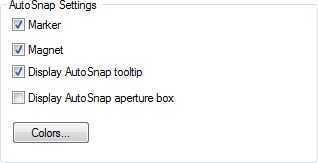

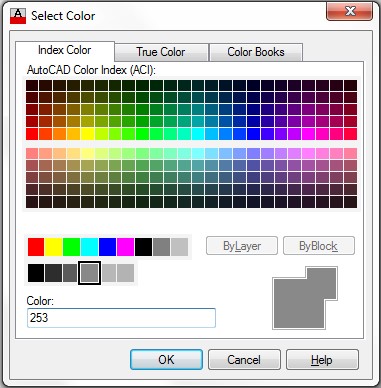
Step 36
Click OK and then click Apply and Close.
Step 37
Set the AutoSNAP Marker Size and the Aperture Size to approximately the sizes shown in the figures. If required, you can adjust these sizes, when required, as you work your way through the book. (Figure Step 37)

Step 38
Enable the 3D Modeling tab. (Figure Step 38)

Step 39
In the Display Tools in Viewport area, set it as shown in the figure. (Figure Step 39)
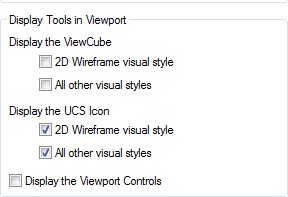
Step 40
Enable the Selection tab. (Figure Step 40)
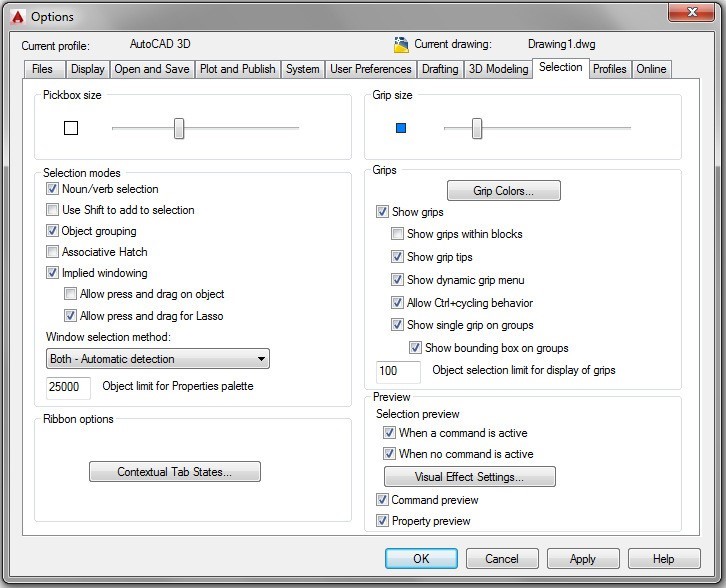
Step 41
Set the Pickbox Size and the Grip Size to approximately the sizes as shown in the figure. If required, you can adjust these sizes, when required, as you work your way through the book. (Figure Step 41)

Step 42
Click the OK button on the bottom of the Options dialogue box to close it.
Step 43
Go to Module 1.
